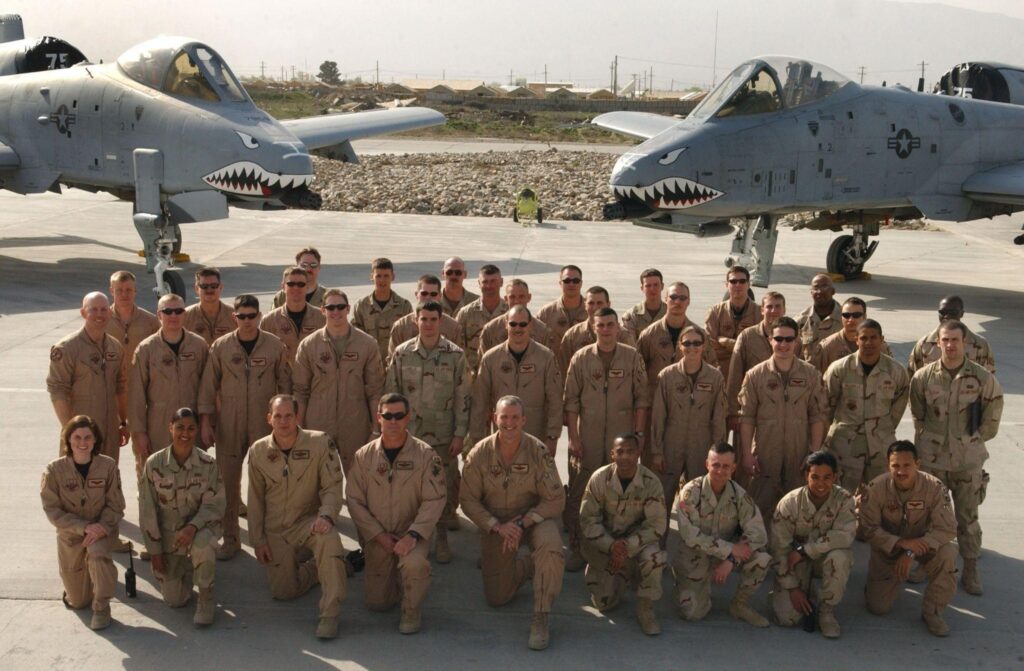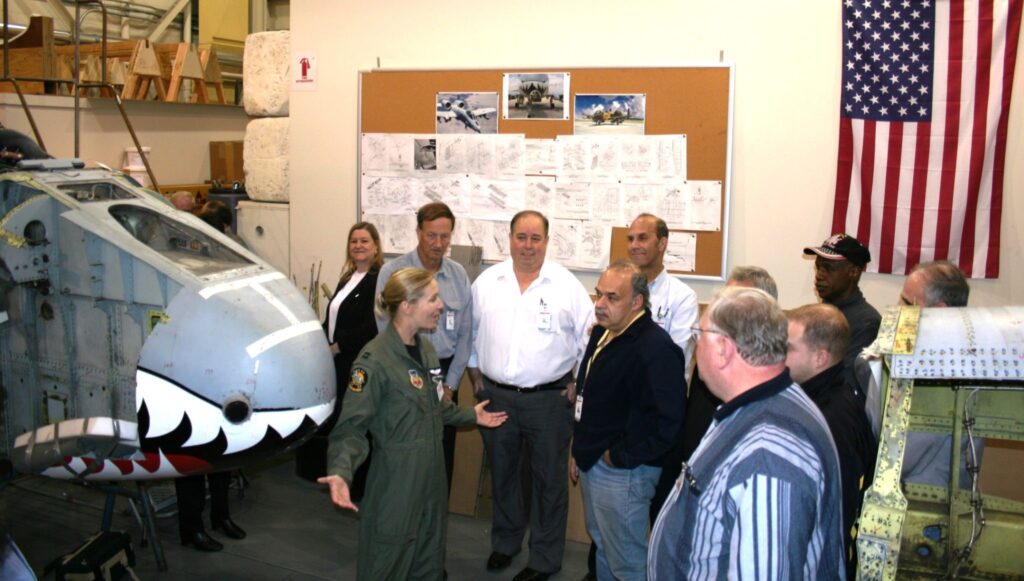Before becoming a leadership coach, I spent 24 years in the US Air Force as a fighter pilot and senior military leader, leading more than 1,000 military and civilian personnel both at home and abroad. Over time, I realized that many of the lessons I learned in the cockpit also had broad applicability to my role as a leader as well.
Fighter pilot culture is unique. We spend our lives working in a high-stakes environment, where we have to make split-second decisions to survive, and where training missions can be just as dangerous as actual combat.
Because of this demanding environment, we have to be able to reduce stress where possible so we can achieve a high-level of performance, while also acknowledging that some level of stress can be a good thing. It’s a balancing act.
Here I’ll take you through some of these ideas and methods to reduce stress in the workplace while also offering some opportunities to embrace stress and use it to your advantage.
Methods you can use to reduce stress in the workplace
Adopt a wingman culture

During a mission, wingmen provide critical mutual support to ensure the flight is safe. They’re responsible for looking out for threats to the formation, either on the ground or in the air.
The flight lead is responsible for driving the flight to the target, navigating obstacles and threats, and is primarily forward focused. A wingman is primarily responsible for checking the flight’s six o’clock position, the area directly behind an aircraft where we can’t see on our own.
Wingmen provide critical mutual support and always ‘check six’ for unseen threats. These tasking priorities ensure each element of the formation understands the part they play with clearly defined roles and responsibilities, reducing the workload and taking some of the stress off of the flight lead.
You can cultivate a wingman culture on your team by ensuring that team members understand the role they play on the team and where they fit into the bigger picture. This means communicating to team members how the work they’re doing is critical to shared success and how it contributes to overall goals and objectives.
Leaders should incentivize an environment where teammates look out for one another, provide mutual support when needed, and will cover down when another teammate is feeling overwhelmed. Foster a mentality that lifting others helps elevate the performance of the team.
Adopting a wingman culture means that each team member feels part of something bigger and more important than themselves.
Communicate priorities

It can feel overwhelming dealing with multiple competing priorities. However, if we focus on what’s most important first, then we can lead our team successfully in the face of challenges.
“Aviate, navigate, and communicate” is a simple phrase we learn early in pilot training that helps us through demanding situations.
When we face an emergency, we learn to slow down and focus on what’s most important first: maintaining control of the airplane. Then we navigate, gaining situational awareness of what is going on around us and figuring out where we need to go. From there, we communicate, letting others know about the problem and, if required, requesting assistance from our wingmen or other assets.
This simple phrase helps pilots prioritize under pressure and maintain focus on the most important aspects first.
These concepts work outside of the cockpit as well and I’ve used them to help me lead my team (and my family) when things get busy and I’m feeling overwhelmed.
We must aviate by keeping our team on course and maintaining focus on our critical priorities. There are the things that we have to keep doing, that we can’t stop doing or we will fail. Then we navigate. We need to have awareness of the goals we are trying to achieve, leading a clear path for our team by knowing where there are threats or risks to the team and mission.
And finally, we must communicate clearly, concisely, and correctly . . . communicating to our team to ensure they know the way forward, communicating with leadership if we need help. Aviate, navigate, and communicate. Focus on your priorities. Focus on what is most important first.
Leaders at all levels need to know and be able to communicate priorities to team members so they know where to focus their time and efforts. This means saying no to things that don’t align with priorities. Assess where duties, tasks, or responsibilities can be subtracted, not added in a time of increased stress.
Be calm in the chaos
Deploying to combat multiple times as a young fighter pilot demonstrated to me the significant role leaders play in keeping their teams calm in chaotic situations.
I watched many of my leaders set the example with their ability to remain calm under pressure. They were always cool and collected on the radio, even when friendly ground troops were screaming for close air support. They recognized how important it was for them to be calm in the chaos to reassure our ground troops in some of the most chaotic and stressful situations.
Although the military environment presents unique circumstances, leaders at all levels in any organization can serve their team well by remaining calm during chaos.
Teams want leaders who are consistent and remain calm and composed, even under stress. Sometimes in all the chaos, our best immediate reaction as a leader is to do nothing. Not every situation requires an immediate reaction. Most of the time we can stop, breathe, and take the time to think about how we will respond.
Leaders play a pivotal role in demonstrating that we understand the intensity of a situation while also helping the team remain calm and composed under pressure. Prioritize clear, concise, and correct communication, especially during a crisis when people are eager for information.
Communicate what you know and be honest about the situation. Instill confidence. Reassure the team that they are well prepared to endure hard times, even when the outcome remains uncertain. Empathize with team member stress levels and act/adjust accordingly.
Consistency creates trust. Our team wants to know they can count on us during tough times. They will be watching to see how we respond.
Focus on those things in your control
There are things in life we can control, things we can influence, and things which we can’t control or influence.
Don’t waste time or mental energy on the things you can’t control because this generally results in increased stress levels. This may be a trauma response, but work can be done to control this. If we focus first on those things we can control, then we can leave the rest for later (or not spend time on them at all).
Make work-life balance a priority

Leaders have a responsibility to set the example and create a culture where work-life balance is a priority. It’s not good enough to just say it’s a priority and then be the first one in and the last one out of the office. If we make the effort to find an overall balance between our personal and professional life, our team will follow our lead.
We know people will perform better at work when their personal lives are taken care of at home, where we ensure our team has time to recharge, and where we encourage people to take care of their families because it’s the right thing to do. Take time off and encourage your team members to do the same.
We need to walk the walk and show our team that we can do it too.
Learn to recognize and support stressed-out workers
Leaders at all levels have a responsibility to recognize and then support stressed-out or burned-out members on their team.
In a fighter squadron, we did this by conducting an operational risk management assessment before each mission we flew. Were we up to the task that day? What external factors were playing a role in our overall well-being? Could we safely accomplish the mission? A commander had the discretion to give team members time off if stress levels were making them non-productive at work (we this emergency leave).
Leaders at all levels can make this assessment by having regular check-ins and simply walking around and talking to our team members. What pain points do they have? Where can we help alleviate stress? What resources are available to help them?
If necessary and appropriate, encourage burned-out team members to take a down day or time away for self-care.
Embracing Stress and Using it to Your Advantage
It's also important to remember that some level of stress can be a good thing.
Stress keeps us on our toes. It keeps us preparing, practicing, and planning for contingencies so that we are ready to face unexpected or challenging situations. The goal is not necessarily to eliminate stress completely. Instead, we should embrace some level of stress.
Stanford University psychologist and author of The Upside of Stress, Kelly McGonigal talks about the impact stress has on our ability to handle difficult moments in this Stanford University article.
“Stress leaves an imprint on your brain that prepares you to handle similar stress the next time you encounter it. Psychologists call the process of learning and growing from a difficult experience stress inoculation. Going through the experience gives your brain and body a stress vaccine.”
That reasoning is exactly why fighter pilots, elite athletes, emergency responders, and others who are required to perform under stress go through repetitions and practice dealing with stress.
One of the techniques used in the flying community is a pilot’s preparation technique called chair flying.
Every night before I flew, I would sit in a chair in my room facing a picture of the cockpit on the wall. I would then talk through every part of my mission, practicing radio calls, thinking through maneuver parameters, and analyzing potential areas that could go wrong on the mission.
Chair flying essentially meant I got a free mission to practice before I ever got into the airplane. I could find my weaknesses and study harder or practice more so when it came time for the actual mission, I was better prepared and also more confident.
I have used the same technique in many situations in my personal and professional life as well. If we ‘chair fly’ a stressful situation we anticipate at work or home, we can prime ourselves for action, effectively cope with stress, and create a positive outcome.
Practice, rehearse, or visualize to find opportunities for improvement. Can you make the time to rehearse critical meetings, conversations, and presentations? Are you able to meet with team members to do a walk-through of new plans or decisions and assess how they might affect the organization?
Practice creates clarity and boosts confidence among your team. Teams that have put in the work to practice will be more productive and are more likely to achieve success when dealing with challenging or stressful situations.
We can find ways to control the stress and adrenaline rush to improve our situation. Learn how to use it. Learn how to harness stress to your advantage.
I would love to hear your thoughts on both reducing stress and embracing stress. Please comment below and let me know what techniques work for you.
Further reading:
- In Too Deep: How To Keep Calm & Carry On When You’re Overwhelmed As A New Manager
- Clarity, Responsibility, And Accountability (CRA) Model Of Leadership
- Improving Work-Life Balance While WFH: 12 Tips For Teams And Orgs
Subscribe to the People Managing People newsletter for more content to help you progress in your career and build healthy, productive organizations.



